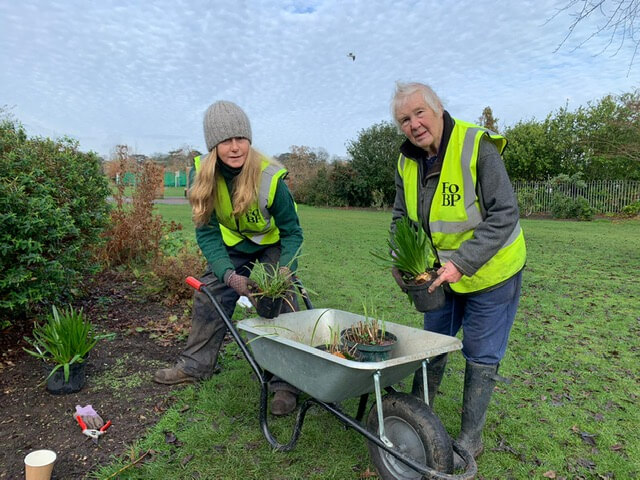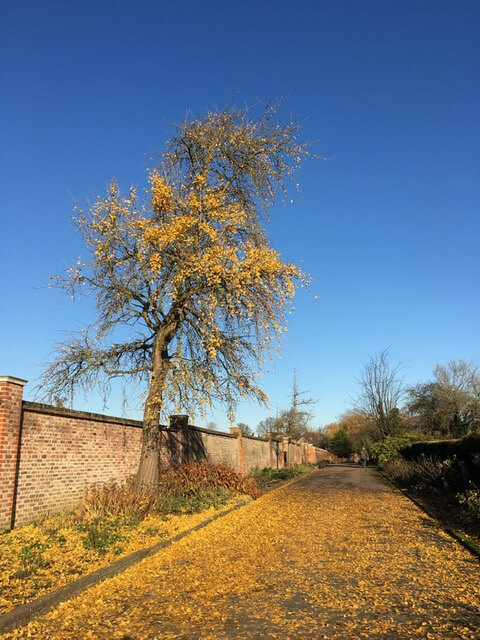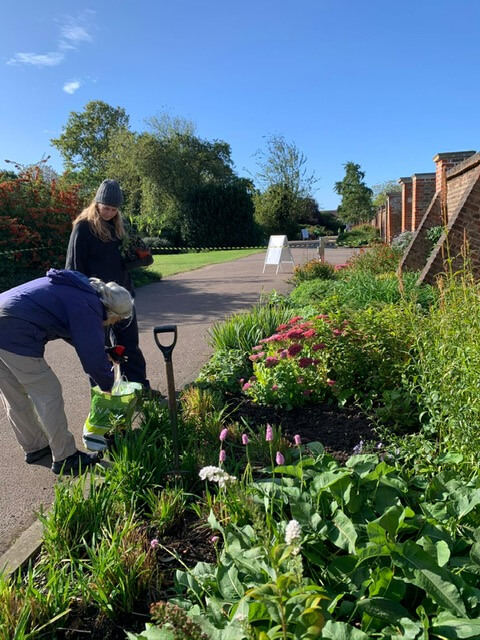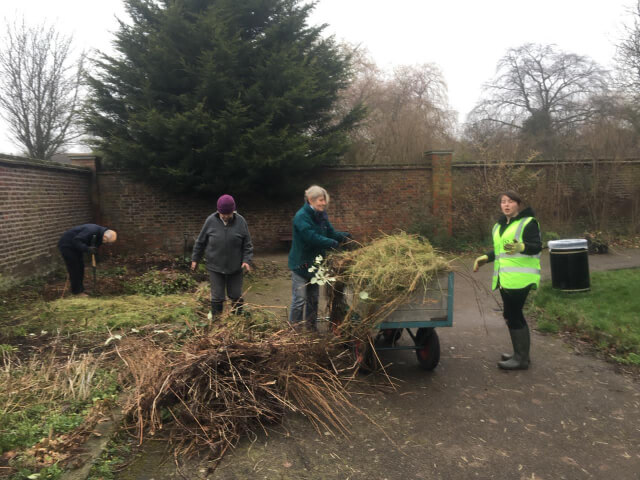 Vic Black (left) and Elizabeth Dobbie at work in Broomfield Park
Vic Black (left) and Elizabeth Dobbie at work in Broomfield Park
Professional gardener and Friends of Broomfield Park volunteer Vic Black gives us the lowdown on what plans are afoot in the park’s historic walled gardens
People often stop me as I’m working in the Long Border in Broomfield Park (the bed stretches for some 200 metres and is said to be the longest in London) to reminisce about how many gardeners used to tend the ornamental beds here "back in the day". The number quoted starts at about six but can go up to an extremely healthy 12. Now that’s a lot of gardeners. More recently, however, there has been no brigade of park staff to keep the beds in check, so many were sadly reclaimed by the weeds. And that would probably still be the case, if the Friends of Broomfield Park had not stepped in.
Having already reinstated the park’s once derelict conservatory, filling it with impressive Agaves, exotic Orchids and other tropical curiosities, established an area of wetlands and an orchard, installed bee hives, planted a wild-flower meadow and opened a café… I could go on, but I think you get the picture… the ever industrious Friends of Broomfield have now turned their attention to restoring the flowerbeds within the park’s historic walled gardens. Leading the project is plantswoman Elizabeth Dobbie, who has pulled together the most horticulturally inclined volunteers to create a sub-group to work its magic on these neglected borders. But make no mistake, with a tight budget, a limited stock of plants and people to tend them, returning these beds to their former glory will be no mean feat. Here are some planting ideas that the volunteers use to keep on top of things in the Long Border that might help you keep your garden in check too:
- "The best weed suppressant is a plant," says Elizabeth, stepping into the border to pull up some chick weed she just spotted. “If there is a gap in the planting, the weeds will take advantage of the bare soil as there is no competition for nutrients, water or light, and they will take over,” she explains. That’s why we are digging up and dividing large areas of Iris, Liriope and Hemerocallis (Day Lillies), for example, and replanting them to occupy as much empty space as possible. Making the most of the plants you already have and propagating them using this method means you get more plants – for free. You can’t argue with that!
 It's not called the Long Border for nothing...
It's not called the Long Border for nothing...
 "The best weed suppressant is a plant"
"The best weed suppressant is a plant"
- Watering plants through the summer (with a hose) is not good environmentally as it uses precious resources and also takes up gardening time that could be spent on myriad other tasks. We therefore grow our plants hard and after an initial period following planting, we try to water as little as possible. This encourages them to send down roots deep into the soil in search of water and, in the long run, will mean that they are less reliant on the hose. During the very long hot spells that are becoming increasingly common in summer, however, when our plants hang their heads and begin to droop in the relentless heat, we do resort to watering. To irrigate most efficiently, be sure to water in the morning or evening when it is less likely to evaporate before being absorbed into the soil. And always saturate an area for at least 20 minutes, as watering lightly encourages roots to stay close to the surface, resulting in less hardy plants.
- We choose robust, long-lived perennials (plants that come back every year) for our borders. This saves us time and money as we don’t need to keep replacing plants with new varieties. The beautiful tall spikes of the Long Border’s Lythrum salicaria (Purple Loostrife) and the Lysimachia clethroides (Gooseneck Loosestrife) are good examples of these. “We have so many different varieties of Loosestrife in the Long Border, I sometimes think we might have the National Collection,” she jokes.
- Famous plantswoman Beth Chatto coined the phrase ‘right plant right place’, and this is something we try to practice when planting in Broomfield’s flowerbeds. The Long Border is South facing with a wall running its entire length and having worked in this bed through the searing heat of summer’s midday sun, I can confirm that it gets VERY hot in there! Planting fragile plants with tender foliage would therefore struggle, so we avoid them. The area at the far end nearer the café on the other hand, is shadier and tends to get waterlogged and boggy in the winter, so plants that don’t mind having wet feet are chosen.
- But finally, the best thing you can do for your garden, is to make it through the back door to see what is going on out there. “The best fertilizer is the shadow of the gardener,” says Elizabeth quoting a Chinese proverb. “Spending time pottering about and checking on your plants is good for your garden, and good for you.”
 Volunteers from Friends of Broomfield Park at work in the Long Border
Volunteers from Friends of Broomfield Park at work in the Long Border
If you’d like to join the Friends of Broomfield Park’s merry tribe and volunteer in the park’s gardens, contact its fantastic chair Kim Lumley at or visit www.friendsofbroomfieldpark.org.
Vic Black is a professional gardener and is available to care for your garden. You can read more about her here or contact her at or on 07905 741296.



